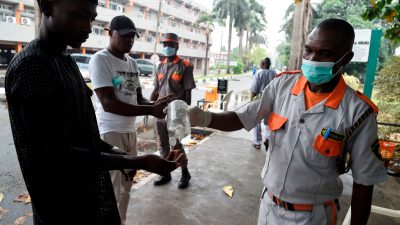In the past two weeks, Covid-19 cases have exponentially increased. This follows improved targeted testing in key areas suspected to have cases of the virus.
While increased testing is expected to increase recorded Covid-19 positive cases, experts associate cold-dry weather with the high rate of transmission of the novel coronavirus.
June marks the start of the cold and dry season in most parts of the country. As such, the number of positive cases is expected to rise, according to research.
PNEUMONIA
According to the Kenya Meteorological Department in their 2020 June-July-August weather prediction, respiratory diseases such as asthma, pneumonia, flu and common colds are likely to increase “due to the expected cool or cold conditions”.
Areas highlighted as the most likely to get cold weather are Nairobi, highlands east of the Rift Valley, central Rift Valley and parts of highlands west of the Rift Valley.
“The daytime temperatures are also likely to be near-average to below-average during the period. A few days may turn out to be extremely cold with temperatures falling below 18°C in some areas,” states KMD in the release.
And just like flu, Covid-19 is a respiratory tract infection, said Dr Bernard Muia, a global public health expert, in an interview with the Nation.
“We are noticing increased cases based on testing of the most vulnerable and suspected people like the drivers and people in quarantine.
THE EFFECT OF COLD WEATHER
“But, the numbers we’re seeing could also be associated with cold weather during which respiratory tract infections and reinfections increase,” he said.
A study, published in the journal — Centre for Evidence-Based Medicine — which is yet to be peer-reviewed, states that “emerging data appears to suggest that cold and dry conditions may facilitate the spread of the novel coronavirus (2019-nCoV).”
The research, which was done in 429 Chinese cities, shows that a change of temperature influences the rate of transmission of Covid-19.
“They (researchers) found that for every 10 increase in the minimum temperature, it led to a decrease in the cumulative number of cases by 0.86.”
Although research on the seasonality of the virus is still scanty, this means that the virus transmission could be influenced by increase or decrease of temperature.
“The study found that, to certain extent, temperature could significantly change Covid-19 transmission, and there might be a best temperature for the viral transmission, which may partly explain why it first broke out in Wuhan,” states the report.
VIRUS GROWTH
An analysis of the SARS, which is related to Covid-19, outbreak in Hong Kong, Guangzhou, Beijing, and Taiyuan found “the optimum environmental temperature associated with the SARS cases was between 16 to 28 degrees Celsius, which may encourage virus growth.”
Another study done by University of Sydney suggests that “winter time could be Covid-19 time”.
The study published earlier last week on the Journal Transboundary and Emerging Diseases shows that there are increasing risks during winter months when humidity is low.
Despite the association, Dr Muia insists on a massive testing of Kenyans to determine the shape of the infection curve.
“Adequate testing is needed, at the moment, contact tracing may not be satisfactory and it may be hard to know whether the infections are peaking or not,” he said.
According to him, if the magnitude of the disease can be established particularly in the hotspots, it is easy to know if the disease has peaked or not.






Comments are closed.